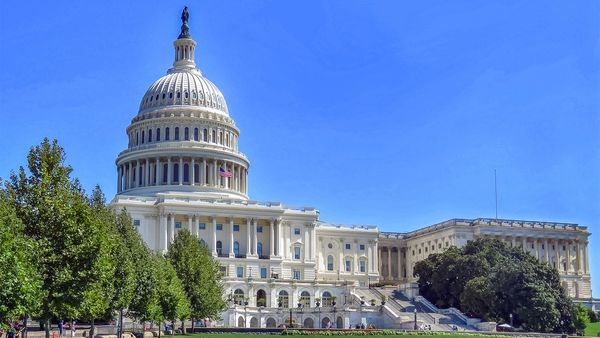
We’re in the regular campaign fight over the leaders’ debates, but this time its core is: who gets to ask the questions around here?
In claiming bragging rights for the May 8 debate, Nine director of news and current affairs Darren Wick was clear: we do — it would be “three of the most experienced journos in the country” who would be “quizzing the two would-be prime ministers”.
It’s part of the Weekend at Bernie’s flavour to election reporting this time around, as Australia’s reporters work hard to keep alive the pretence that it’s their day-by-day media reporting that makes a campaign matter.
Maybe once, when the campaign sashayed repetitively through its daily ritual: as the party leaders danced from morning radio, to a stand-up press conference for the boys and girls on the bus, and on to a hi-vis photo-op for the evening news.
When the gallery back-slaps Morrison over his campaigning skills, here’s what they mean: he’s great at dancing that dance, day after day from campaign beginning to end.
Now the dance is losing relevance and the traditional media has had to run its own campaign to prop it up: from its earnest “it really matters!” week-long gaffe explainers; to last Friday’s “media frenzy” when, first day back from iso, Labor Leader Anthony Albanese passed his daily presser over to the campaign surrogates; and on to the Nine masthead’s insistence on there being “fury” in Labor ranks at the leadership’s failure to understand that tightly paywalled, once-were-newspaper mastheads still set the day’s agenda.
But it’s not the campaign that most Australian voters experience. Right now, there’s another campaign that seems to be actually shifting votes, with electorate-by-electorate, in-your-face campaigning, largely beyond the media’s daily gaze.
By schlepping on through the well-worn steps of the dance, the traditional political media is missing a critical point about 2022: it’s not just another election. It could be a transformational moment that is remaking politics.
It’s a revolution that will not be televised. Late on Saturday night, we got a glimpse of the other side when Rob Baillieu, campaigner for Frydenberg’s teal independent challenger Dr Monique Ryan, tweeted: “75% of Kooyong has now been door knocked”. About an hour and half later, he updated: “It’s actually closer to 80%.”
The traditional media dismisses these sorts of data points. What’s that got to do with the Wage Price Index, after all? It’s surely that widely reported gaffes, not door-knocks, change votes.
As once a union organiser, I get how impressive it is to put this all together. It suggests there’s a deep and engaged activist team across the Kooyong community, each with their own networks, friendships and families, creating a presence and real stir that no voters will be able to miss.
It works on an old union organising saw: the best way — often the only way — to get someone to do something new (join a union, change the voting habits of a lifetime) is to ask them, one by one by one.
Look at the US 2020 election: due to COVID, Democrats held off door-knocking while Republicans kept at it. The result? Unexpected Democrat losses in local elections, even while Joe Biden was carrying the national vote.
This Kooyong data point, along with all the other scraps of news and social media out of once-safe conservative electorates, suggests something big is happening: we could be seeing the biggest shake-up of the blue side of Australia’s two-party system in one hundred years, probably the biggest since 1922 when the nascent Country Party seized the rural and regional base of conservative politics.
Since the late 1990s Hanson explosion, conservative parties have chased a certain type of voter: Howard’s battlers, Abbot’s tradies, Morrison’s quiet Australians. Rural and regional, white settler, manual workers, unlikely to have finished high school. It’s the base of right-wing populists around the world from Trump to Marine Le Pen.
Lech Blaine in his Quarterly Essay last year dubbed them (not unaffectionately) “parochials”. Guardian Australia’s Katharine Murphy last year called them “men at risk of voting Labor”.
Trouble is, in an urban and increasingly diverse society, the Howard-Abbott-Morrison strategy depends on the nose-holding of comfortably off-city voters in, say, Sydney’s North Shore and Melbourne’s eastern suburbs, as they stick with the party of their parents.
Election by election — particularly at the state level — that loyalty has weakened. Now it looks set to collapse. Here’s an election story: will Morrison’s legacy be that as he deepens the Liberal’s hold on regional “parochials”, he loses the urban base that is the future of any viable conservative politics in Australia?







